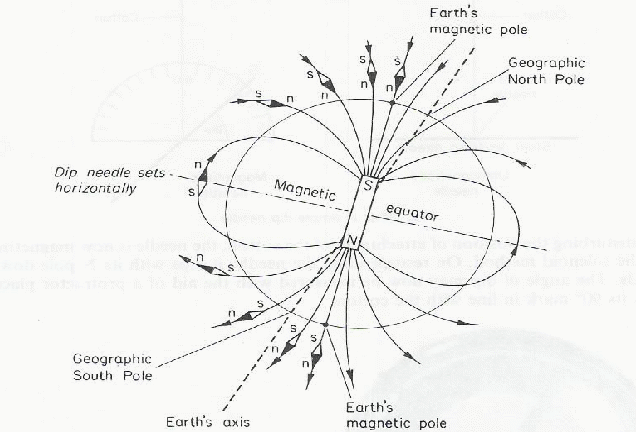The Earth has a magnetic field generated by currents in it's rotating core. The magnetic field acts as though it had a giant magnet at it's centre.

Over most of the Earth's surface, the magnetic field is inclined to the surface, so that a freely suspended magnet will not be horizontal, as shown above. The angle between the horizontal and the Earth's magnetic field at each point is called the inclination or dip.
An ordinary compass needle shows no tendency to dip. It is pivoted above it's centre of gravity.
The angle of dip changes slowly, as if the 'magnet' inside the Earth were rotating about the Earth's axis with a period of about 960 years.
